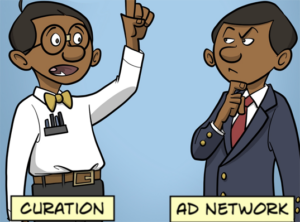“The Sell Sider” is a column written by the sell side of the digital media community.
Today’s column is written by Matt Prohaska, principal and CEO at Prohaska Consulting.
Like the US political news cycle today, the mar tech news cycle moves pretty quickly, so I recognize we are near or at the end of the immediate attention arc for bid caching. But I wanted to make a couple of broader points that we hopefully won’t forget the next time news like this pops up again – and it will.
My family loves board games, and our daughter loves beating her dad. One particular soul-crushing game we like to play is “Sorry.”
When our daughter was 7 years old, she learned to recognize after drawing a 10 when to move forward 10 spaces or back one to take her dad’s space and send him packing. It was like she had discovered plutonium, and Dad suffered from it.

From the Prohaska basement – choose your own favorite board game analogy.
Imagine if she played “Sorry” without knowing all the rules. The discovery of Index Exchange using bid caching to sell more impressions feels like buyers (and most sellers) not knowing all the rules of how a supply-side platform (SSP) operates. I’ve heard of one tech firm characterize bid caching as criminal.
But this isn’t the first – and, unfortunately, is likely not the last – SSP to be less than fully transparent about how the rules of their game is played.
Full disclosure: We have worked with Index Exchange more than 100 times over the years and were once hired directly for a project. For what it’s worth, we have found IE historically to have some of the lowest fraud levels of supply compared to the other major North America display and mobile SSPs. The team has demonstrated transparency and strong character in many areas, dating back to their Casale Media days. And the talking points they sent us about bid caching are in line with their typical practices, though it appears that it is the only SSP to be discovered using bid caching, which it has since stopped.
But in our society today, especially in the United States, where transparency is at a premium at certain levels of government and our industry, it is understandable for players of the game to storm the castle with torches and pitchforks every time the rules are not clearly laid out ahead of time or before changes occur. We have seen this with soft floors, buy-side fees and first-price vs. second-price auctions. One consistent analogy between SSPs/early-Xaxis/Criteo and financial markets is that in any inefficient market, market makers will look to create efficiency, benefiting themselves and hopefully others in the market.
It is no wonder brands continue to question programmatic practices, while still – for now – increasing spend every year. And it’s why some TV and out-of-home execs who have never done a single programmatic buy or sell, but read and hear plenty about it, think programmatic is not for them, when it would be if done the right way. And it’s why more private marketplaces should be transacted versus open auctions. And why demand-side platforms (DSPs) and smart brands, including P&G, Amazon or Netflix, are motivated to push for more server-to-server integrations and remove SSPs from the equation entirely.
Fortunately, our industry is starting to favor trust and transparency more, not just in voice but with publishers’ inventory and advertisers’ spending. If SSPs and DSPs don’t start coming clean with other auction games, shenanigans or inconsistent rules already taking place or on their road maps, it will be those companies and executives who will be truly “Sorry.”
Follow Matt Prohaska (@mattprohaska), Prohaska Consulting (@TeamProhaska) and AdExchanger (@adexchanger) on Twitter.












